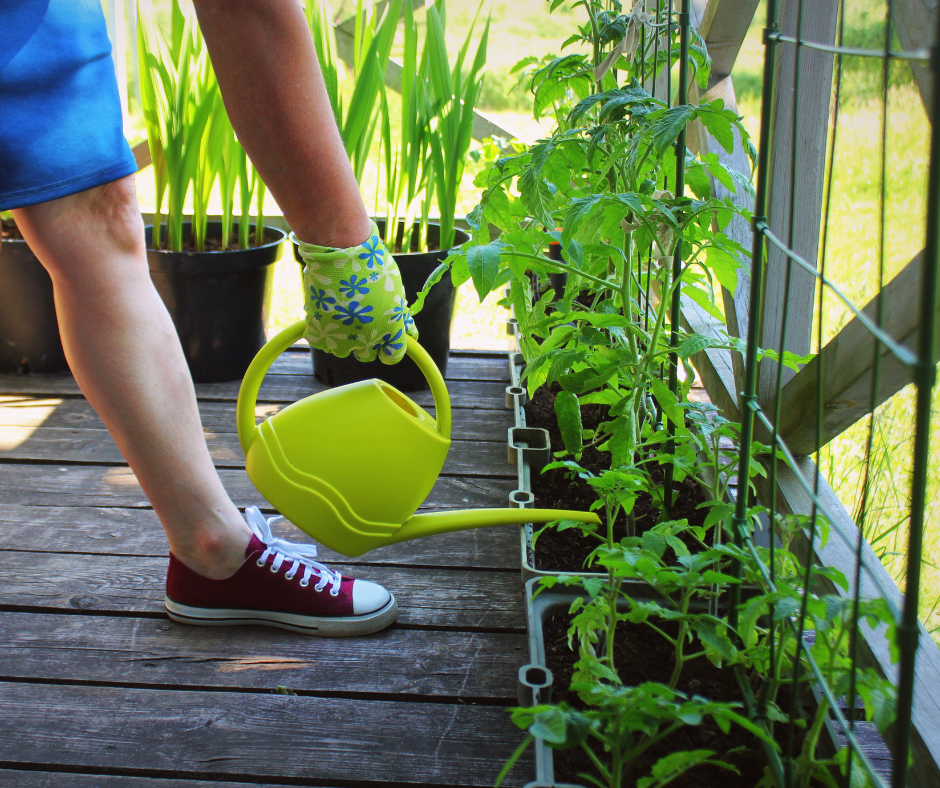How to Garden in a Container
go.ncsu.edu/readext?862854
en Español / em Português
El inglés es el idioma de control de esta página. En la medida en que haya algún conflicto entre la traducción al inglés y la traducción, el inglés prevalece.
Al hacer clic en el enlace de traducción se activa un servicio de traducción gratuito para convertir la página al español. Al igual que con cualquier traducción por Internet, la conversión no es sensible al contexto y puede que no traduzca el texto en su significado original. NC State Extension no garantiza la exactitud del texto traducido. Por favor, tenga en cuenta que algunas aplicaciones y/o servicios pueden no funcionar como se espera cuando se traducen.
Português
Inglês é o idioma de controle desta página. Na medida que haja algum conflito entre o texto original em Inglês e a tradução, o Inglês prevalece.
Ao clicar no link de tradução, um serviço gratuito de tradução será ativado para converter a página para o Português. Como em qualquer tradução pela internet, a conversão não é sensivel ao contexto e pode não ocorrer a tradução para o significado orginal. O serviço de Extensão da Carolina do Norte (NC State Extension) não garante a exatidão do texto traduzido. Por favor, observe que algumas funções ou serviços podem não funcionar como esperado após a tradução.
English
English is the controlling language of this page. To the extent there is any conflict between the English text and the translation, English controls.
Clicking on the translation link activates a free translation service to convert the page to Spanish. As with any Internet translation, the conversion is not context-sensitive and may not translate the text to its original meaning. NC State Extension does not guarantee the accuracy of the translated text. Please note that some applications and/or services may not function as expected when translated.
Collapse ▲ Townhomes, condominiums, apartments, and small in-town lots don’t give you much room to grow plants. You may only have a small area or perhaps just a balcony where you may get enough sun. You can grow anything in a container – from fruits, vegetables and herbs, annuals and perennials, to trees and shrubs. Some plants may require special soil mixes, but most will do fine in a high-quality potting mix. There are many types of containers that you can use. You can purchase concrete containers, lighter weight materials that look like concrete, terra cotta, ceramic, wooden barrels cut in half, and plastic. If you are a little more eclectic, you can use items that you might have around your home as containers for growing plants. Old dishes, old wooden baskets, old wheel barrows, watering cans, old buckets, old cast iron pots, or even old boots or shoes are some examples. My grandmother was a little disappointed with me when she discovered that I had taken the old cast iron bean pot she had given me and turned it into a container full of impatiens! Just make sure any item you may use as a container has drainage holes in the bottom and have fun gardening. There are entire books on the subject of container gardening, so check out your local library or book store.
Townhomes, condominiums, apartments, and small in-town lots don’t give you much room to grow plants. You may only have a small area or perhaps just a balcony where you may get enough sun. You can grow anything in a container – from fruits, vegetables and herbs, annuals and perennials, to trees and shrubs. Some plants may require special soil mixes, but most will do fine in a high-quality potting mix. There are many types of containers that you can use. You can purchase concrete containers, lighter weight materials that look like concrete, terra cotta, ceramic, wooden barrels cut in half, and plastic. If you are a little more eclectic, you can use items that you might have around your home as containers for growing plants. Old dishes, old wooden baskets, old wheel barrows, watering cans, old buckets, old cast iron pots, or even old boots or shoes are some examples. My grandmother was a little disappointed with me when she discovered that I had taken the old cast iron bean pot she had given me and turned it into a container full of impatiens! Just make sure any item you may use as a container has drainage holes in the bottom and have fun gardening. There are entire books on the subject of container gardening, so check out your local library or book store.
Join the Union County Extension Master Gardener Volunteers for the Successful Gardener program on May 5, at 7 p.m. Ian Schaller’s topic will be “Grow Little Buddy”. He will discuss ways to achieve a healthy harvest with local and sustainable amendments you can make at home to feed plants and the soil. He will also discuss when and how to fertilize your plants for the best possible results. The program will be held virtually via Webex. It is free, but registration is required at mastergardenersunioncountync.org.




